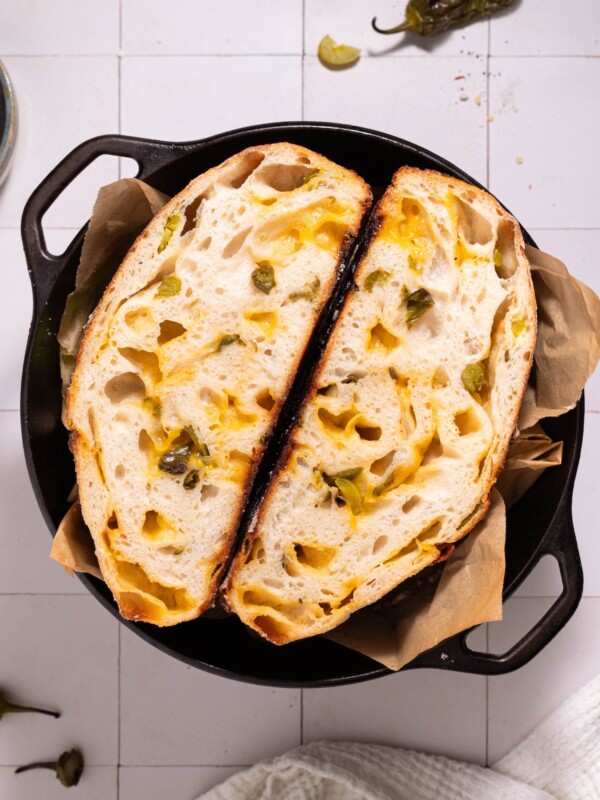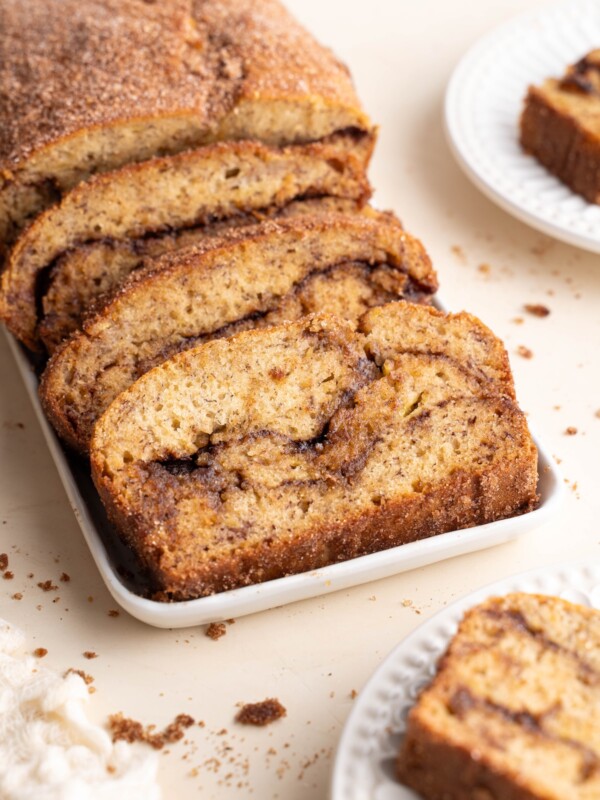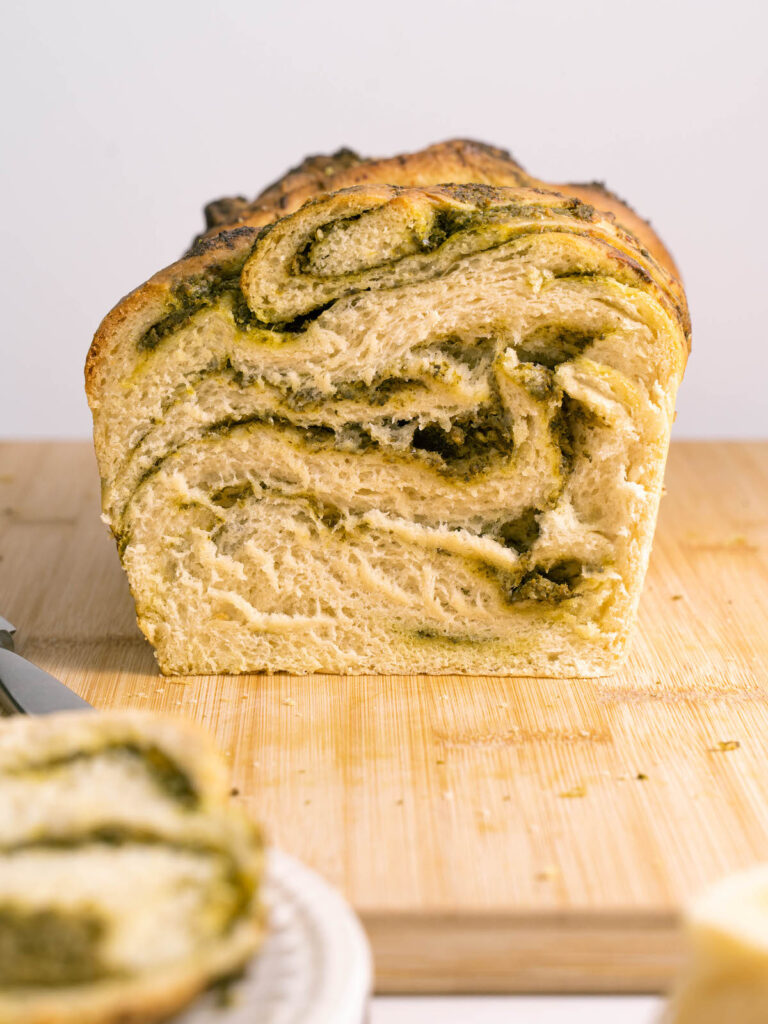
I am SO excited to share this very special Nettle Pesto Bread with you! It’s an enriched sandwich loaf that’s swirled with a savory, bright green pesto made from stinging nettles.
While the pesto and the bread themselves are quite easy to make, this recipe does require a romp through the woods to harvest plants that might sting you. So, it’s definitely for the adventurous! It’s so insanely delicious and unique that I swear it’s worth the risk.
What’s special about this nettle pesto bread
Any bread swirled with pesto is naturally delightful, but this isn’t just any old pesto. Nor is it just any old bread, to be fair. The pesto is made with freshly foraged stinging nettle leaves, and the bread is based on a recipe for sandwich bread that I used to make for a James Beard award-winning restaurant I worked at years ago. This recipe is good, really really good.
It certainly doesn’t hurt that it also looks super impressive. But don’t worry, getting that beautiful spiral pattern throughout the dough isn’t hard at all, especially if you’ve made cinnamon rolls before. Trust me, the hardest part is definitely harvesting the nettles!
Gathering & cooking the nettles
If you’re into wildcrafting and you live in the Pacific Northwest, you’ve probably harvested nettles before. We’re blessed to have an abundance of them here. They’re full of vitamins and super tasty, too.
When harvesting nettles, be sure to wear gloves! The best time to collect stinging nettles is early spring, when the plants are young and tender. You want to harvest them before they start to flower. Once they have just a few sets of leaves is a perfect harvesting window, as the plants are big enough to handle their tops being snipped, but young enough that their stems aren’t tough.
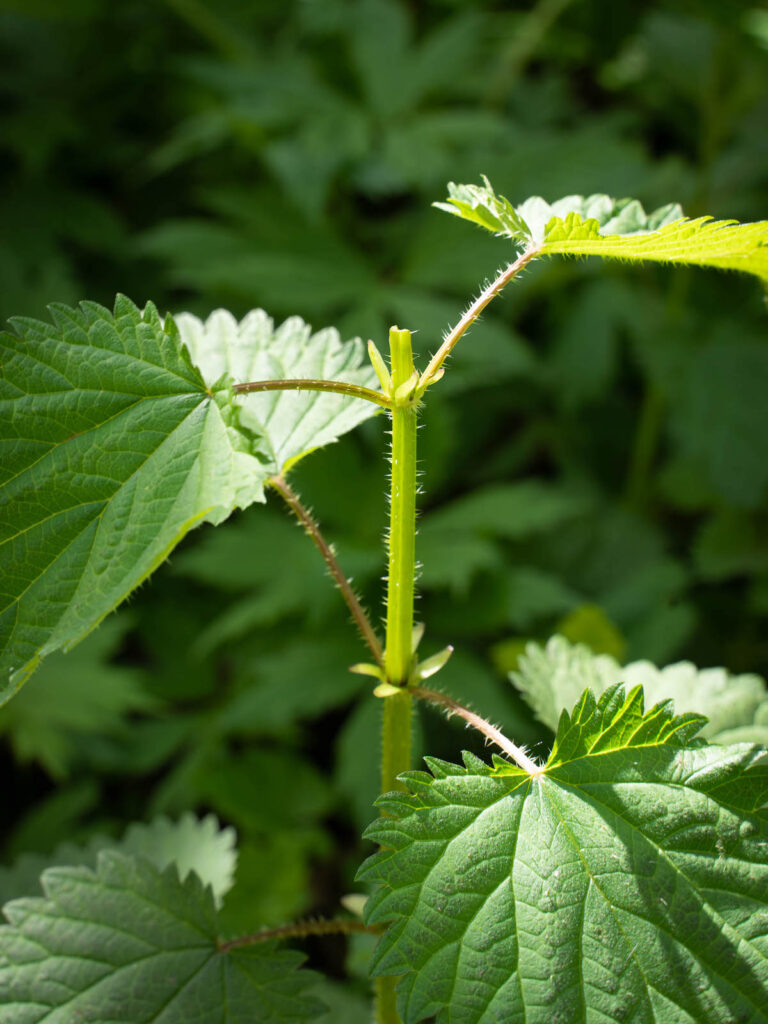
Use your (gloved) fingers to pinch off the top few sets of leaves, or use scissors to chop them. I recommend you bring a produce bag or canvas bag with you to store the leaves as you go. One large plastic produce bag full of leaves and tender stems will be more than enough to make this recipe.
Blanching the nettles
Once your hike is over, it’s time to prep the nettles. Cooking nettles is essential to take their sting away. Some people say you can make pesto with raw nettles, as the pulverizing action also deactivates the sting. However, I worry that the formic acid and histamine that cause the stinging sensation are still viable if they’re uncooked, so I don’t feel good about making a raw nettle pesto. Use your best judgment here and do what makes you feel comfortable!
I used tongs to roughly measure my stinging nettles before cooking them and found that six cups of loosely packed nettles turned into about one cup of cooked greens, the perfect amount for this pesto. I recommend giving them a light rinse in a colander before cooking them.
Then, get a large pot of salted water boiling. Drop the nettles in with the tongs and gently push them under the water. Turn the heat down a bit and simmer for about three minutes, depending on how tender your greens are.
Remove the nettles using the tongs or a slotted spoon and plunge them immediately into an ice bath. Once they’re cool, drain them from the cold water and they’re ready to use for this recipe!
hot Tip!
For more information on harvesting and preparing nettles, see my guide on cooking with nettles.
How to make nettle pesto bread
Ok, it’s time to create that beautiful pesto swirl! This simple technique creates a random spiral pattern throughout the bread that looks gorgeous. It’s the same method I used for my Cinnamon Swirl Bread.
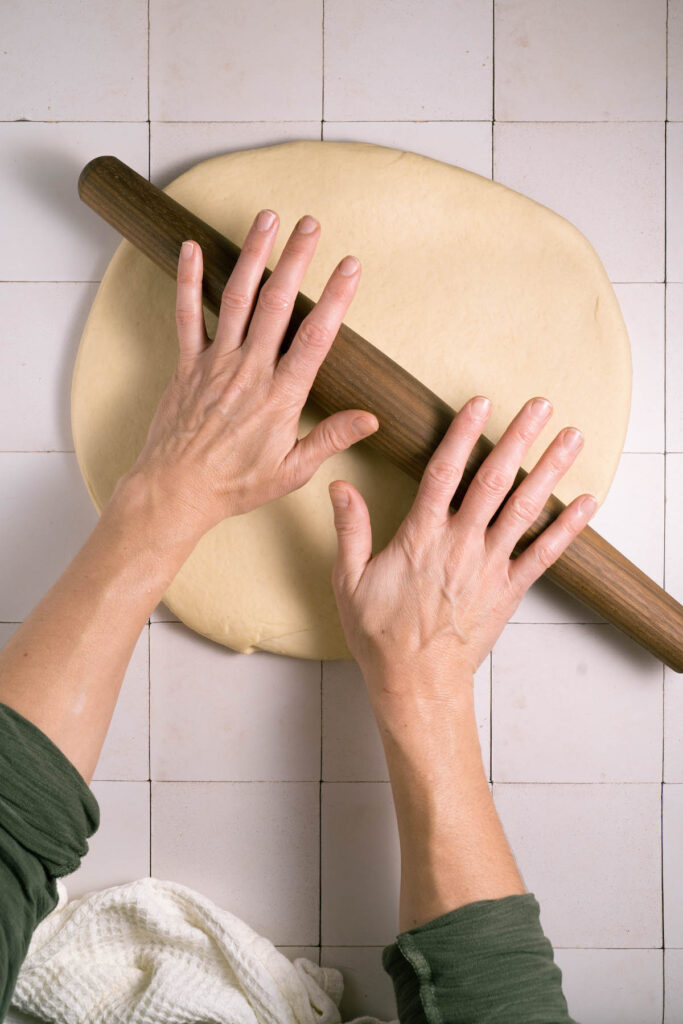
Once your bread dough has gone through its first rise, roll it out into a rough rectangle.
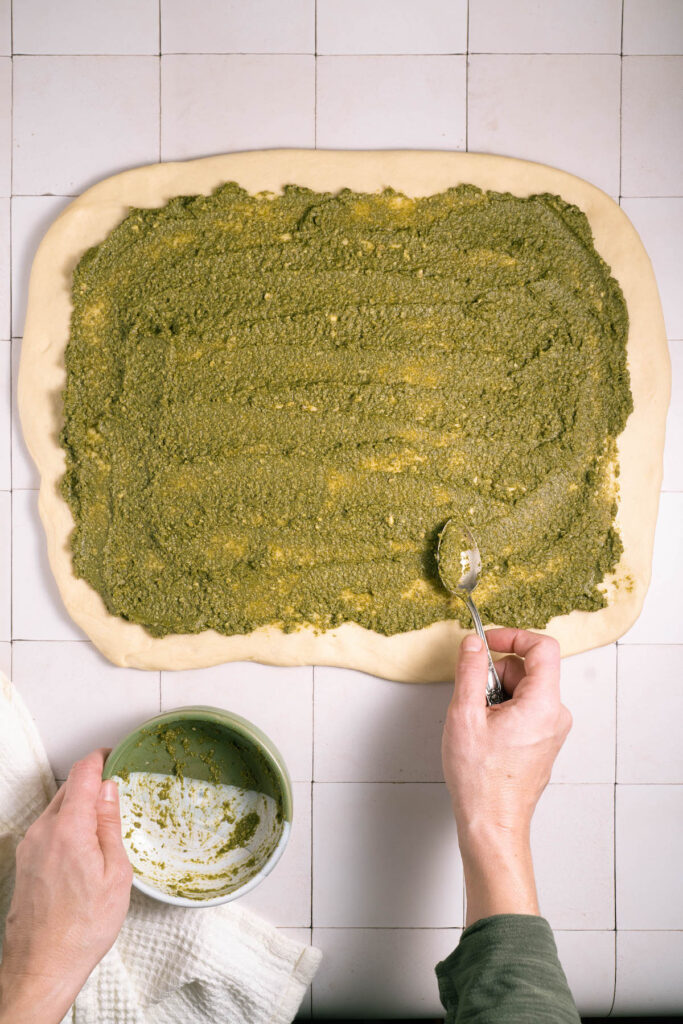
Then, spoon the nestle pesto onto the dough and use the back of the spoon to spread it evenly over the dough, leaving about an inch border around the edges.
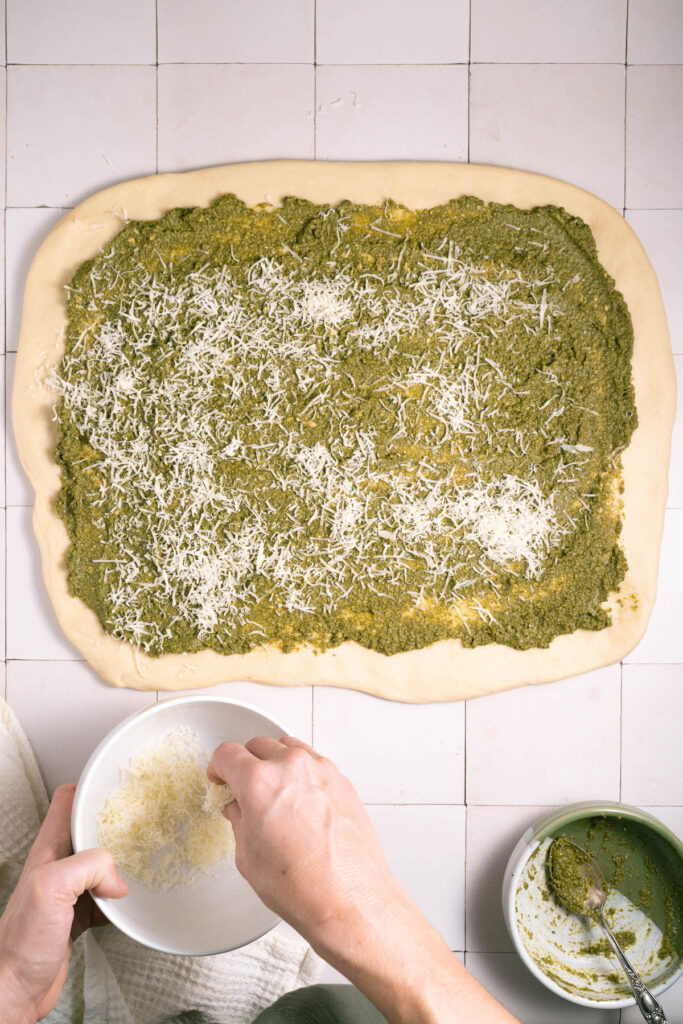
Sprinkle parmesan evenly over pesto.

Starting from one of the longer sides, roll dough up into a log, just like you would roll up a cinnamon roll. Try to keep it pretty tight!
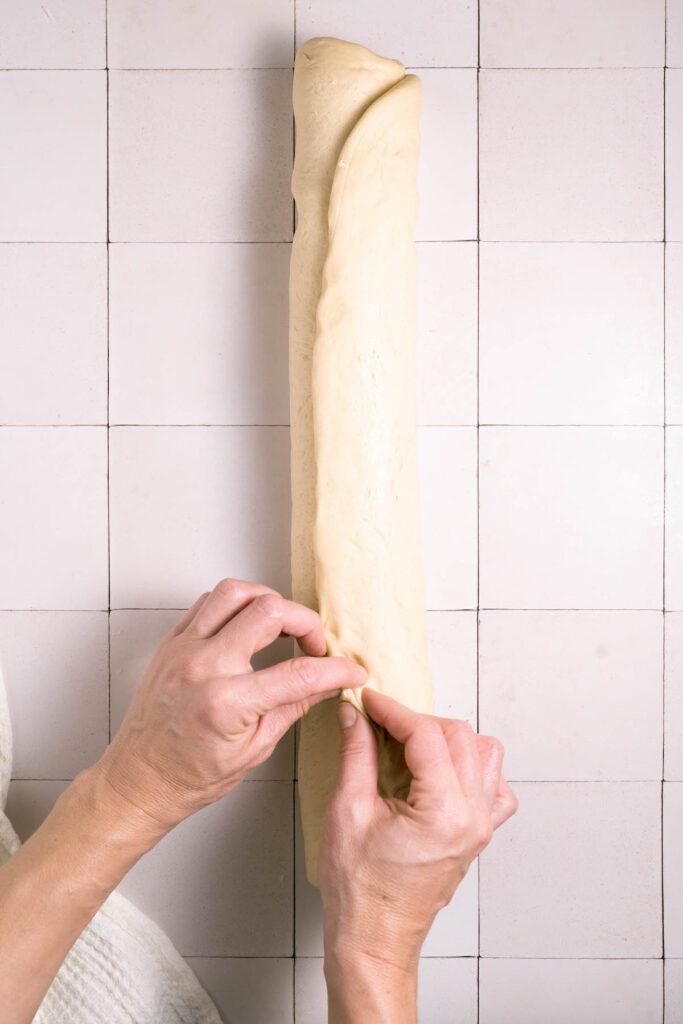
Pinch the seams together with your fingers, then flip the log over so the seam side is down.

Use a sharp chef’s knife or bench scraper to cut the dough log in half vertically, keeping the top inch or two still intact.
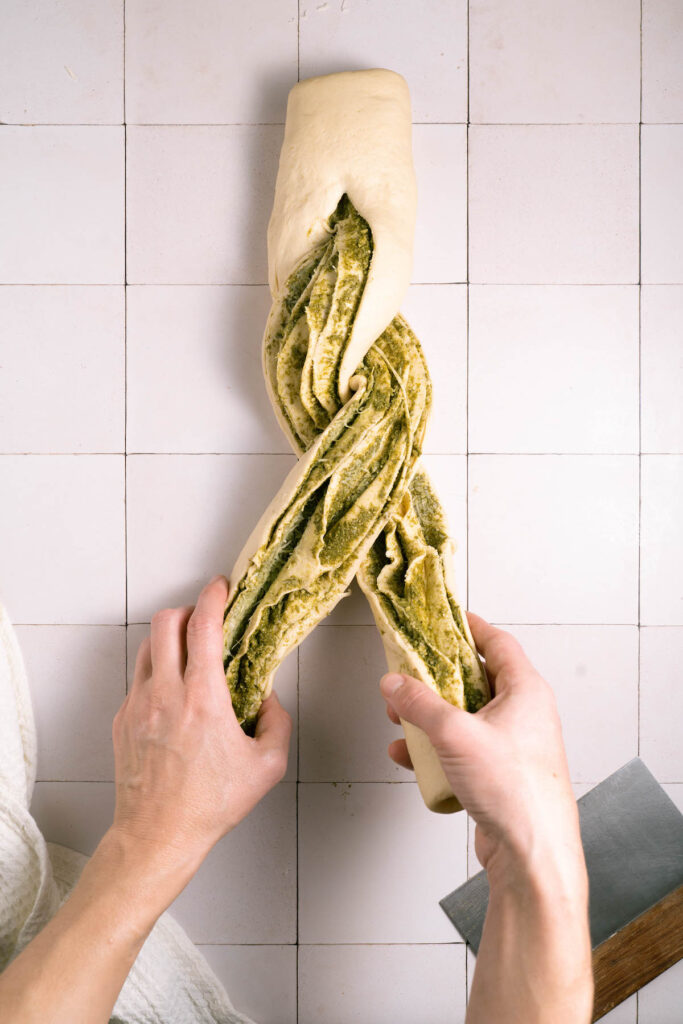
Twist the two sides over each other, creating a simple braid. Tuck the end under.
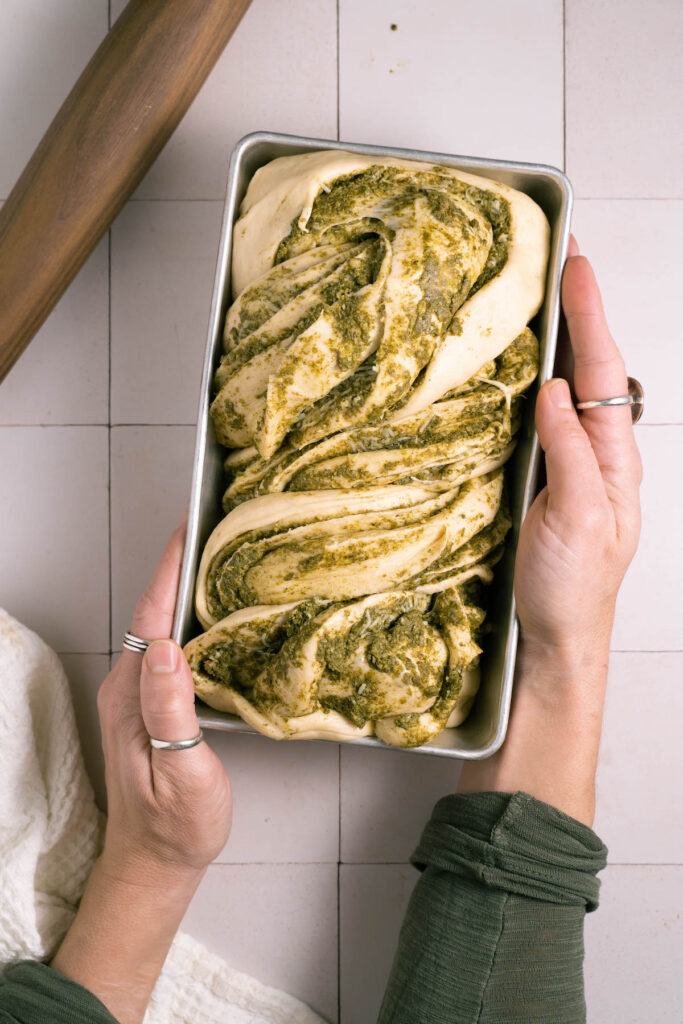
Place braided bread carefully into a 9×5-inch loaf pan and let it rise again until doubled. Now, it’s ready to bake!
Tips for success
Normally, I recommend using a digital thermometer to decipher if bread is baked properly, but this one is a little tough to read. If you stick the thermometer into a pocket of pesto, it will read low, so in this case it’s not the best way to tell if the bread is done.
The bread should be nice and golden brown and pulling away from the sides of the pan. If you press down on the center of the bread, you should feel resistance rather than softness. Around the 30 minute mark, your bread should be pretty close to done.
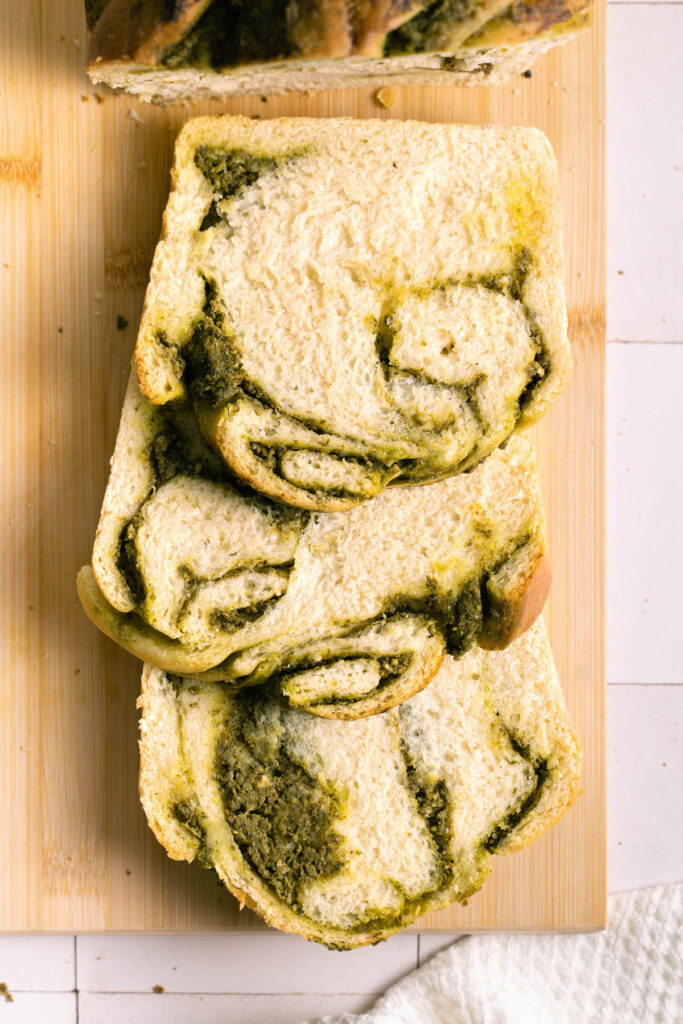
I hope you enjoy this super special nettle pesto bread! If you give it a try, please let me know in the comments!
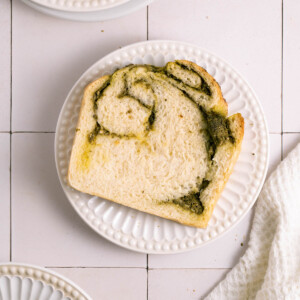
Nettle Pesto Bread
Equipment
- 9×5 inch loaf pan
- Food processor
- Stand mixer with hook attachment
Ingredients
Nettle Pesto
- 1 cup blanched nettles, (see notes)
- ¼ cup walnuts, toasted
- ¼ cup parmesan, grated
- 1 large clove garlic, chopped
- Zest of 1 lemon
- Juice of ½ lemon
- 1 pinch each salt & pepper
- ¼ cup olive oil
Bread
- 1 cup warm water, (about 100° F)
- ¼ cup warm milk, (about 100° F)
- 2 ounces unsalted butter, melted
- 1 ounce sourdough discard, optional
- 1 pound 4 ounces bread flour
- 2 ounces all purpose flour
- 1.75 ounces brown sugar
- 13 grams salt
- 1 package active dry yeast
Filling
- 1 cup parmesan, grated
Instructions
For the pesto:
- Add walnuts to a food processor and pulse a few times to break them into smaller pieces.
- Add blanched nettles, parmesan, garlic, lemon zest & juice, and salt & pepper. Blend until everything is well combined and nettles are well broken down. Stop blending and scrape down the sides of the food processor as necessary so that everything gets thoroughly mixed together.
- With mixer running, slowly drizzle in olive oil and continue blending until you have a nice smooth paste. Scrape pesto out of food processor into a small bowl and set aside.
For the bread:
- Melt the butter in a small pan over low heat. Turn heat off and add the milk and water to warm up slightly (you want it to be around 100° F). Add this mixture to the bowl of a stand mixer.
- Add sourdough discard, if using. Blend.
- Add flours, brown sugar, salt, and yeast. Using the dough hook, mix on low to medium-low speed for about 10 minutes, or until dough is smooth and shiny and doesn't stick to the bowl at all.
- Place dough in an oiled bowl, cover with plastic wrap or a kitchen towel, and let rest until doubled in size, about 1 – 1.5 hours.
- Roll dough out on a lightly floured surface into a rough rectangle, about 12 x 16 inches. It doesn't need to be perfect.
- Spoon nettle pesto onto dough and use the back of a spoon to spread it evenly over dough, leaving about an inch border around all the edges.
- Sprinkle parmesan evenly over pesto.
- Starting from one of the longer sides, roll dough up into a log, just like you would roll up a cinnamon roll. Try to keep it pretty tight! Pinch the seams together with your fingers, then flip the log over so the seam side is down.
- Use a sharp chef's knife or bench scraper to cut the dough log in half vertically, keeping the top inch or two still intact.
- Twist the two sides over each other, creating a simple braid. Tuck the end under.
- Place braided bread carefully into a 9×5-inch loaf pan. Cover with plastic wrap or a damp kitchen towel and let rest until doubled in size (the bread will be about an inch above the lip of the pan at this point).
- Preheat oven to 350° F. Bake until bread is golden brown on top and fully baked through, about 30-35 minutes. If the bread starts to get too brown on top at any point, you can cover it loosely with foil to prevent further browning.
- Let bread cool for about 15 minutes before inverting and removing from pan. Cool completely before slicing and serving.
Notes
Did you try this recipe?
Be sure to leave a comment below!